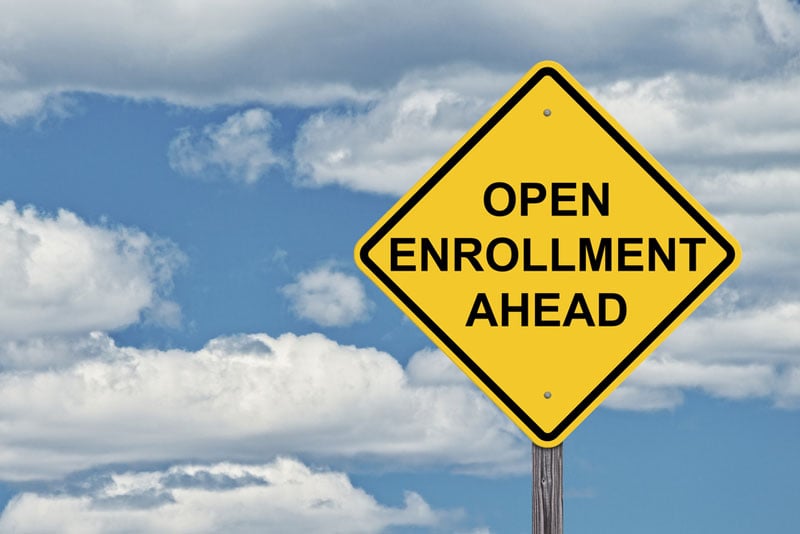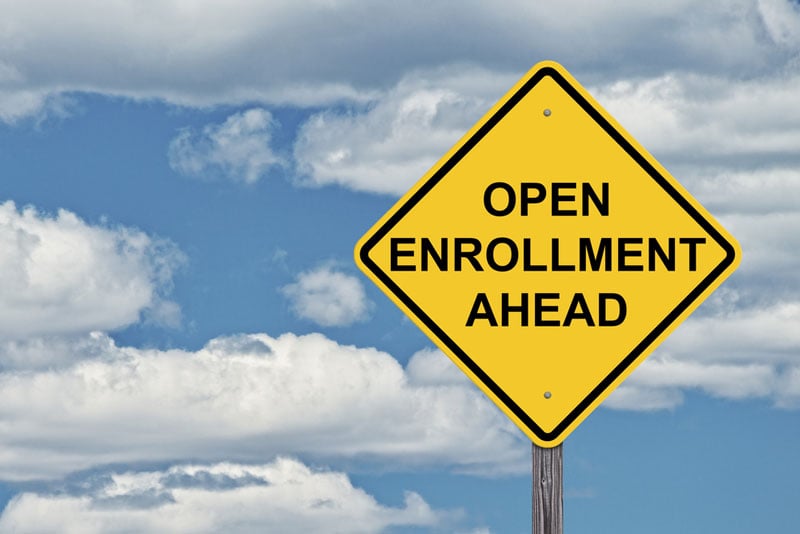 Open enrollment season can be overwhelming for business owners. Thankfully, we have compiled a guide that is designed to help you streamline the process, complete with actionable tips you can begin using right now. While it is complicated and can be confusing, there is no reason to fear or dread the upcoming open enrollment period as a business owner. Instead, embrace it for what it offers your employees and yourself as a business owner. Read on to learn more:
Open enrollment season can be overwhelming for business owners. Thankfully, we have compiled a guide that is designed to help you streamline the process, complete with actionable tips you can begin using right now. While it is complicated and can be confusing, there is no reason to fear or dread the upcoming open enrollment period as a business owner. Instead, embrace it for what it offers your employees and yourself as a business owner. Read on to learn more:

What is Open Enrollment?
Open enrollment is the time period in which individuals can enroll in Obamacare or Affordable Health Care Insurance via Healthcare.gov. For the upcoming season, the earliest date of enrollment for healthcare plans is November 1, 2023. The last day to enroll is January 15, 2024. This is the only time of year that individuals can switch plans, start a plan, or re-enroll in a current plan they are using. If individuals miss this period, then their options are limited in terms of health insurance, consisting of mostly special enrollment exceptions, employer-based-only coverage, short-term health care, or Medicaid or Medicare.
Streamlining Open Enrollment A Guide for Business Owners
Now that we have considered what open enrollment means and why it's immensely important to get your employees heading in the right direction during this crucial time, let’s look at how to streamline this process for your employees:
1. Start Early and Communicate
As mentioned above, the earliest enrollment date for this open season is November 1st, 2023. However, that doesn’t mean that you should wait until that time to begin discussing this issue. Instead, plan ahead and communicate clearly about open enrollment times for your employees. This will ensure they have ample time to review their healthcare options and are able to make informed decisions, not in a rushed manner.
2. Review and Update Benefits Plans
Another important aspect of streamlining the open enrollment process is to encourage the evaluation of current plans. Take this time before the enrollment period starts to gather feedback from your employees. This will ensure that you are ahead of the game and understand what your employees’ needs are, and are keeping up with the changing industry trends.
3. Simplify The Enrollment Process
Utilize user-friendly online platforms and benefits administration software to streamline data collection and automate workflows, reducing manual errors and saving valuable time. This will work wonders when it comes to streamlining a process that can get confusing, overwhelming, and immensely time-consuming.
4. Educate and Empower Employees
Provide comprehensive resources, offer engaging information sessions, and highlight the value of benefits to help your employees make confident choices that align with their individual circumstances. In many cases, this education and empowering process can include printable materials that help employees understand what the wording on the plans means to them in real life. You can also offer educational videos or re-education meetings to update individuals regarding any changes that have been made to the plans overall. Regular email communications as a way to remind employees of upcoming important dates are also advisable.
5. Provide Personalized Support
By the time you arrive at this step of the process, you likely know what your employees need and have provided them with the necessary resources to become more educated on the process. However, you can help even more by assigning a dedicated contact person at your place of business who will address individual questions and offer guidance to employees. This will help your employees feel they are supported throughout the whole enrollment process. As an example of some of the issues that this personal support person could address, consider the following common questions that employees might ask about various plans:
- What facilities, hospitals, or doctors will plans cover or not cover? Most employees have regular doctors with whom they have already established a relationship, which they will want to continue. They will likely want to know what facilities they can visit and what doctors are included in any coverage they are considering.
- How much is affordable? Encourage employees to consider not only the cost of the monthly premiums (which will be adjusted based on income in many cases) but also the annual deductibles, coinsurance, and copay fees. In some cases, a more affordable premium isn’t worth the increased deductible if they actually depend on their healthcare coverage regularly or are frequently visiting the doctor.
- What isn’t covered? Some medical health care plans don’t cover all an individual's procedures, surgeries, medication, or other medical needs. Therefore, especially if an employee has a chronic condition, they need to know what is and what is not covered under their plan.
6. Conduct Post-Enrollment Evaluation
Although this step comes after open enrollment has ended and the hard work of helping employees get the coverage they need has passed, it's vitally important to next year's endeavor that you find out how the process went for employees this time around. To do this, gather feedback to identify areas for improvement and ensure a smoother experience in the future. This demonstrates your commitment to continuously enhancing the open enrollment process for everyone involved.
It is Possible to Make Enrollment Easier
By implementing the tips listed above, you can effectively simplify open enrollment for your employees and ensure a smoother experience. This, in turn, will foster employee satisfaction and maximize your benefits program, which is a win, win for your brand! Contact us at TPC where we are More Than Payroll, to learn more about streamlining the often frustrating experience of open enrollment. We are happy to help walk you through the process or offer resources to make the entire experience a little smoother. 




